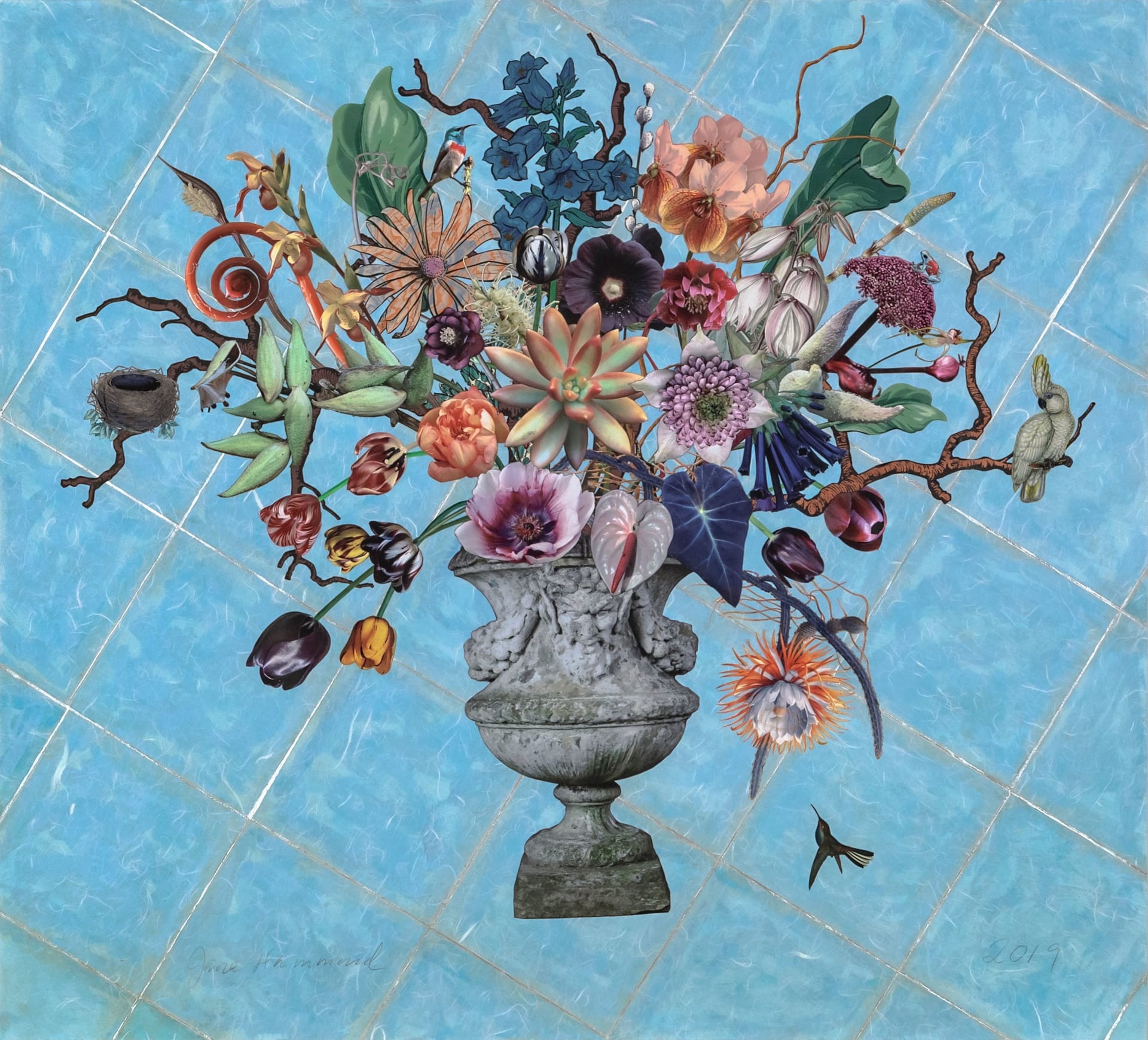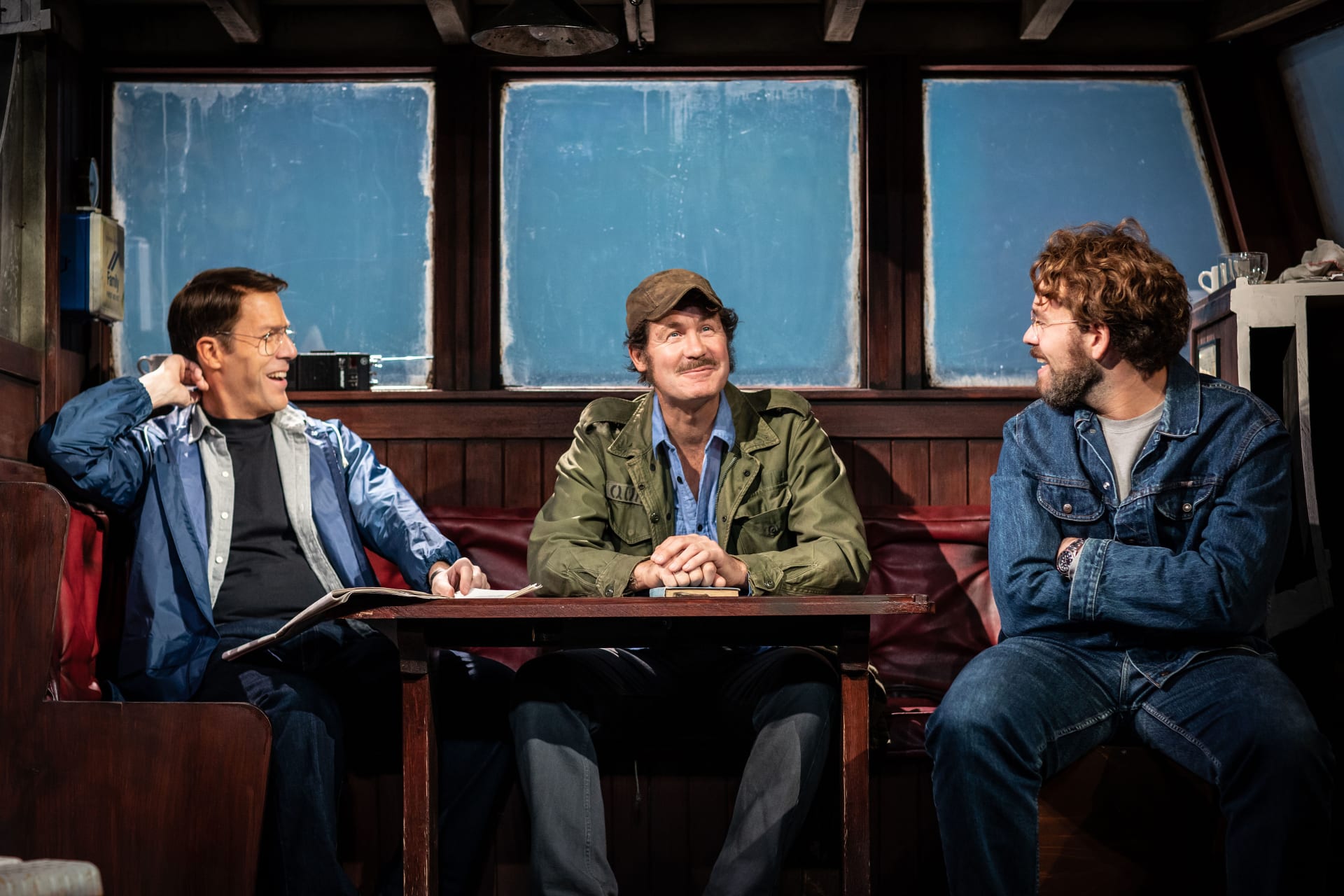With the prospect of several more cold wintery months ahead, there is nothing better than some cultural inspiration to combat any winter gloom.
The 17th Century Tithe Barn at Thyme with it original beams and rubble walls is a beautifully historic building and an impressive exhibition space. It is host to an inspiring cultural program of talks, events and exhibitions, making it an ideal place to retreat to this winter.
The next exhibition, Jane Hammond: Natural Selection, Traditional Botanicals re-imagined opens on 27 January 2023 in collaboration with The Lyndsey Ingram Gallery in London. This is a solo exhibition of the Contemporary American artist Jane Hammond whose works are part of over 70 public collections including The Museum of Modern Art, NYC, The Whitney Museum of American Art and The Metropolitan Museum of Art.
As a collage artist, Hammond’s works offer a re-interpretation of the painterly tradition of botanical art. The spectacular arrangements of flowers, grasses and seeds, accompanied by insects and birds are curiously familiar yet the juxtaposition of images from a myriad of places and time results in works that are entirely original and somewhat unexpected. These collages highlight the incredible nuances, niches and unexpected connections that exist in the natural word.
An interview with the artist reveals an insight into the contrasting styles and divergent origins of these botanical collages whose apparently natural forms have an abstract quality encouraging an unnatural realm that belies the apparently familiar iconography.
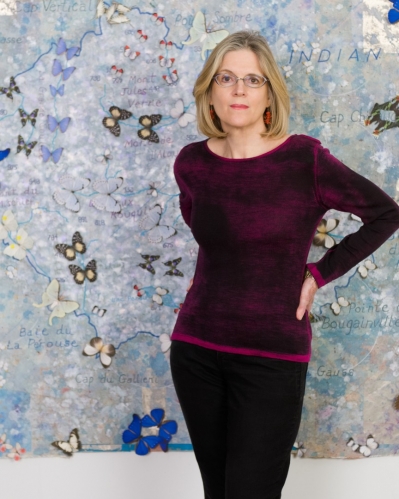
What is the starting point for your collages?
The starting point is different in each case. Sometimes it is an idea such as "a piece where everything is poison, "a piece where everything is edible"; "Life cycles of the Monarch Butterfly" etc. Other times it is chromatic: Green, Brown and Pink flowers, glass Vase, white paper with gold flecks."Gold ground, mostly white and very dark flowers, Bird of Paradise with long black feathers." It varies. But I pretty much always start with an idea, I don’t just start randomly arranging things. Sometimes the beginning is a particular paper I'm eager to use and its marriage with a vase – then that drives the plant information.
How long have you been collecting the eclectic array of media you use in your work, and where do you look to source this?
A long time. I collect books, so for example I have a small group of books on flowers with that oddball early colour photography. The pictures are interesting but by our standards today they do not resemble the flowers – this can be interesting. In 2007 I did a residency at Dartmouth College and I lived there for three months. I quickly discovered the Dartmouth Medical Library where there were collections such as seven volumes on the mosses of Turkey, five volumes on the lichens of Puerto Rico, big taxonomic studies. This is where i really got serious about expanding my flora holdings. Once the librarian telephoned me and said "I know you have unlimited library privileges as the Resident Artist, but did you know you have 129 books signed out?" In recent years I do a lot of internet searching and peruse online digital libraries. For me the hunt is part of the process. I love it. I would say most days I do some image hunting.
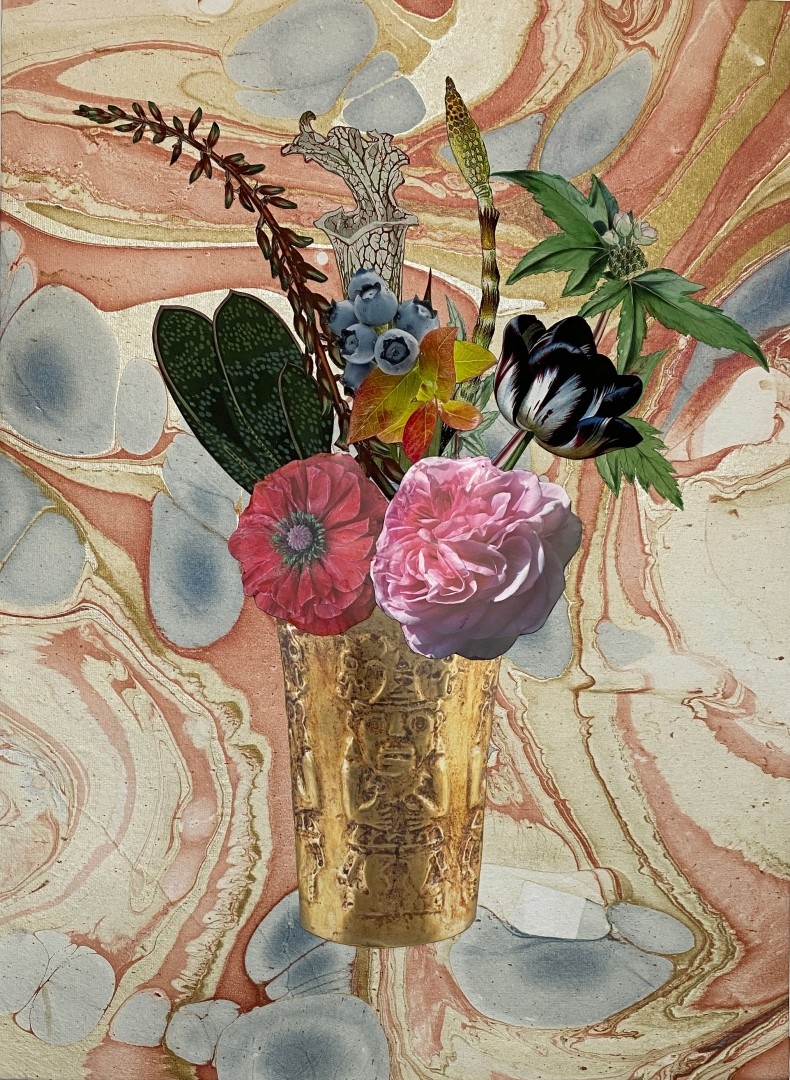
What is the most enjoyable part of your creative process?
Being in the zone. You've worked out the idea and done the original arrangement, which can take several days and now you are putting the piece together. You are immersed in the minutiae of it and you have not yet encountered the inevitable problems in which your initial idea/composition idea seems to wobble. You are not yet in what I call the fight – where things are fraught and you are fighting to pull the whole thing off compositionally, chromatically, as an ensemble of forms. You are still blissfully assembling.
Is there a style or period of art that inspires you the most?
I like all kinds of art: Egyptian, NW Coast Indigenous art from the Americas, Japanese prints, early Italian, Dada and Surrealism, Pop. I'm an omnivore.
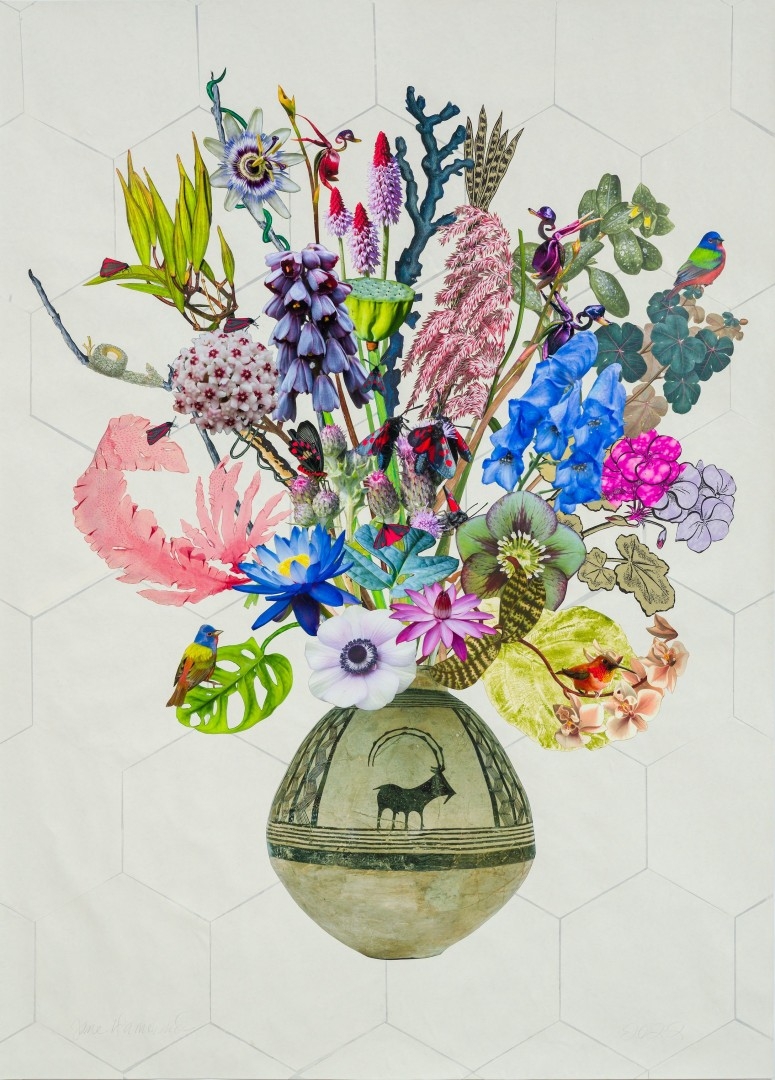
Was creating art always your calling?
I went to college thinking I was going to study to become a doctor. I liked Science best when I was young, but once I started making art in the early seventies it edged out everything else and became all-consuming.
Jane Hammond Natural Selection, Traditional Botanicals re-imagined - 27 January-31 April 2023 in collaboration with The Lyndsey Ingram gallery at The Tithe Barn, Thyme.
In addition to visiting the exhibition, Thyme also host a programme of Happenings on the last Friday of each month.The next event will be with celebrated local author Clover Stroud (24 Feb, 10am) and will be followed by a talk with the Colourist and Interior Designer Edward Bulmer (31 March, 10am). In addition, cookery workshops plus a twelve month residency with Vigour and Skills will take place throughout the year, opening the programme with a botanical painting workshop with Fiona Chivers. Thyme is quietly growing into Oxfordshire’s most discerning cultural destination.
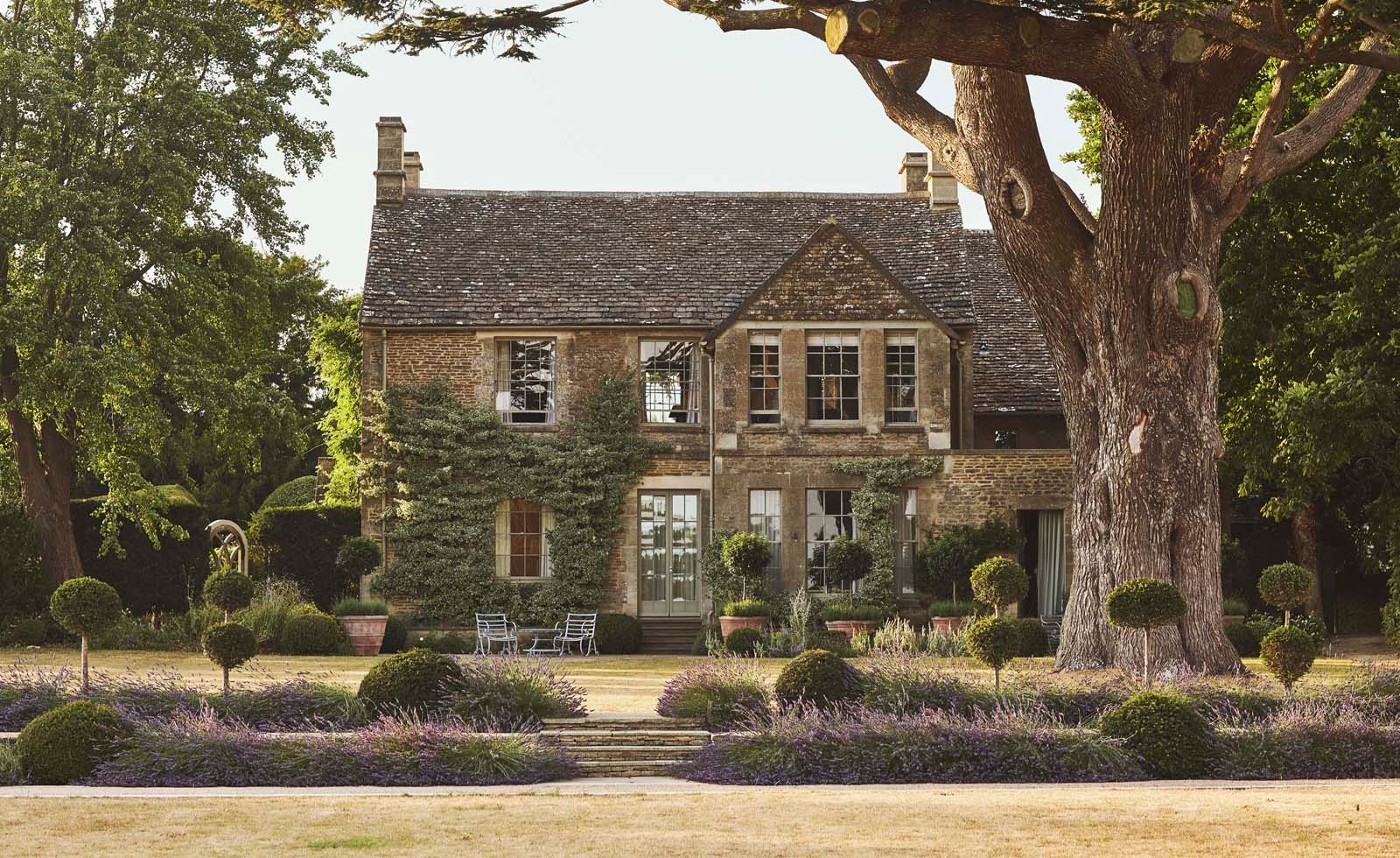
The full programme can be found at thyme.co.uk. Bookings can also be made for lunch or supper at the Ox Barn restaurant or The Swan, the newly opened village pub which is also part of Thyme.
Look out for the spring issue of OX Country which will feature the first in a series of seasonal articles by Caryn Hibbert, Founder and Creative Director of Thyme and Bertioli .
Image courtesy Jane Hammond and Lyndsey Ingram.

